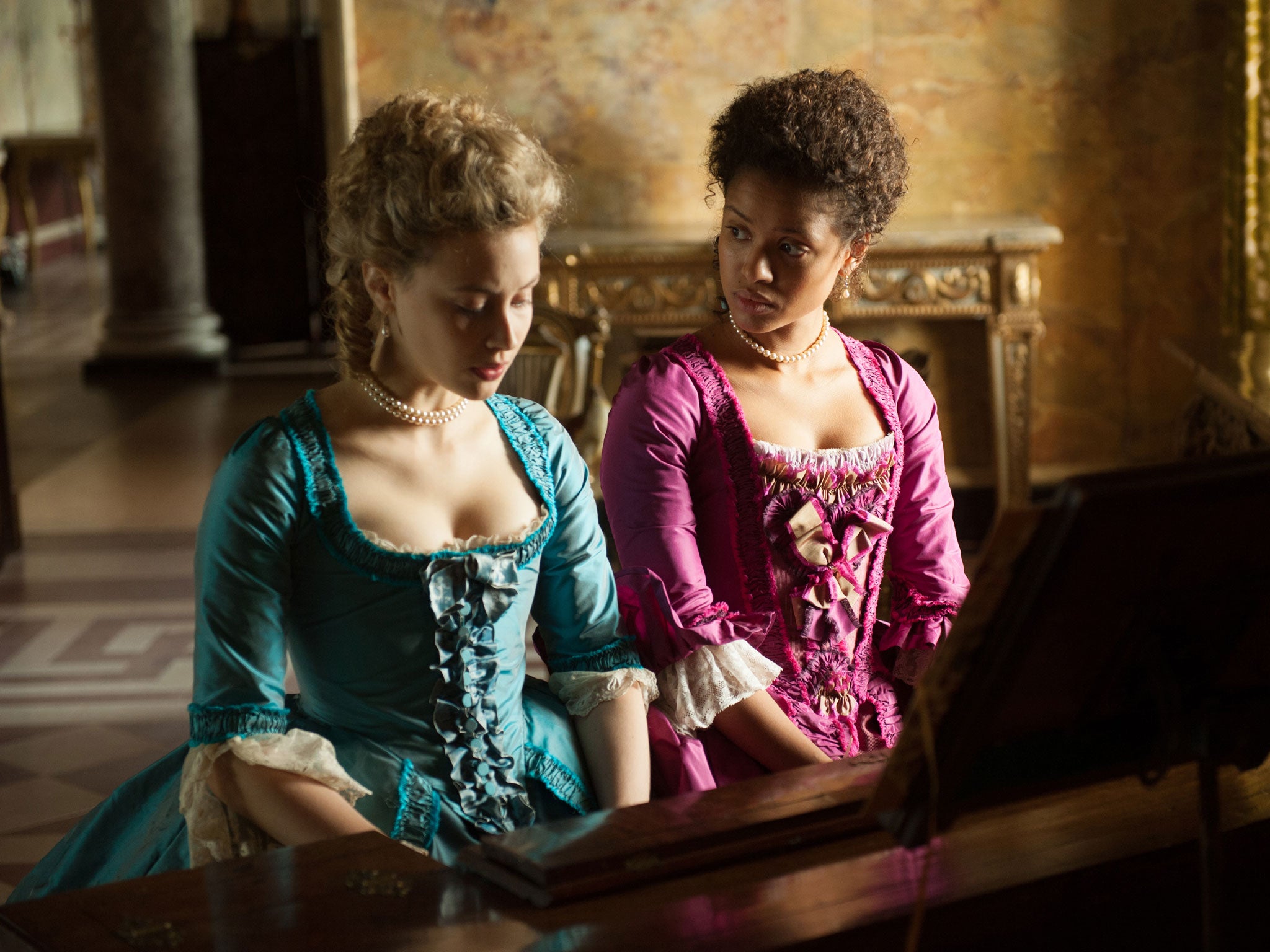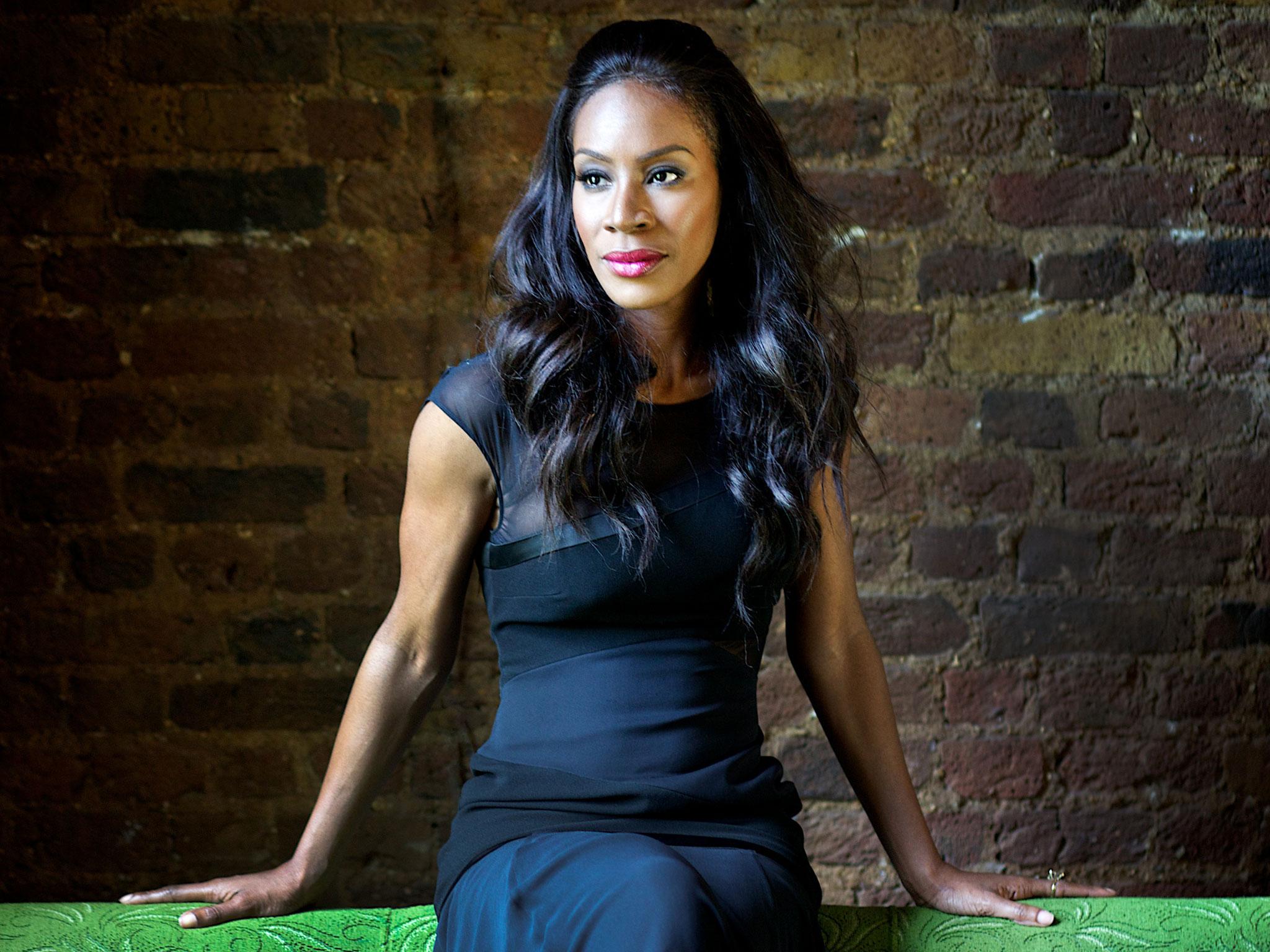Belle: The film which sheds light on a radical episode in the abolition of slavery

Within the world of art history, one 1779 double portrait is a real rarity: here’s a pretty blonde girl in a pretty pink dress – so far, so familiar – but next to her is a spirited mixed-race girl, also dressed in finery, on an equal footing within the frame.
This painting, attributed to Zoffany, was commissioned by Lord Chief Justice Mansfield who lived at Kenwood House in Hampstead, northwest London. It depicts his two nieces, whom he raised as his own. They were Elizabeth Murray and Dido Elizabeth Belle – the latter the illegitimate child of John Lindsay, a Royal Navy captain, and an African slave. Yet both girls were given an education, an introduction to society, and this bold, sisterly placing in a portrait. Such high-status treatment of a non-white woman would have sent shock waves through the Georgian aristocracy.
Within the world of contemporary film, too, the presence of a refined, bi-racial girl in a costume drama of corsets and ringlets is a rarity. Yet the new movie Belle features just that: directed by British film-maker Amma Asante, it tells Dido’s astonishing story with all the sumptuous period details, marriage-market machinations and soaring romance you’d expect from a good Jane Austen adaptation – but with a “woman of colour front and centre”, as Asante puts it. Dido is played with grace, intelligence and vigour by British actress Gugu Mbatha-Raw.
“I always wanted to do a costume drama,” Asante cheerily admits. “But I needed something to hang my hook on. While I very much wanted to create an Austen-esque world, I also wanted it to be an Amma Asante film.”
When she investigated the story behind the Dido painting, she found her perfect hook – for Lord Mansfield was also instrumental in bringing about the end of the British slave trade. Race, class, gender, identity, romance … this tale ticked all of Asante’s boxes.

Something to bear in mind: writer Misan Sagay originated the project and wrote the screenplay between 2004 and 2010 before leaving the project due to ill health. After coming on board in August 2010, Asante worked on the screenplay, though, in a subsequent Writer’s Guild of America arbitration, Sagay was awarded sole scriptwriting credit.
Back to Lord Mansfield and the British slave trade: he notably presided over the Zong Massacre trial, a key plot development in Belle: 142 diseased African slaves were thrown off a ship, the Zong, in 1781 – worth more dead, with an insurance payout, than alive. The insurers refused to pay; the owners took them to court. Lord Mansfield (played in Belle by Tom Wilkinson) eventually sided with the insurers, refuting the notion that slaves were disposable cargo. The horrific treatment of slaves, highlighted by the case, strengthened the abolitionist movement; the British slave trade officially ceased in 1807.
“How could I do [this story] with any integrity if I didn’t include the key trade that was funding that genteel society?” questions Asante, a strong-willed 44-year-old who, one senses on meeting her, doesn’t have much truck with compromise. “Knowing that the Zong case was key in Lord Mansfield’s life, and that he had Dido living in his home when he was doing it – it was just perfection.” The facts about Dido are fairly sketchy – and the film uses artistic licence in turning her husband-to-be into an abolitionist lawyer so their romance also becomes her political awakening – but Asante thinks it’s fair to assume that Dido had an impact on Lord Mansfield’s rulings. Gugu Mbatha-Raw agrees: “Having a child of a slave in your household must have influenced him, even on a subconscious level.”
Belle has just been released to a very positive reception in the US and it joins a new wave of “black films”, bracketed with 12 Years a Slave. Asante is both enthused by and wary of such categorisations: “I don’t know what a ‘black film’ is, but I understand society’s need to label things. It’s very difficult when you’re in the middle of it, [to tell] whether it’s a fad or a genuine change. But I feel the power of the movies that have come out since last September ... ” – here she slaps her hand for emphasis, reeling off Mandela, 12 Years a Slave, The Butler, Half a Yellow Sun – “I hope the force with which they’ve come out facilitates change.”

Watch Apple TV+ free for 7 day
New subscribers only. £8.99/mo. after free trial. Plan auto-renews until cancelled.
ADVERTISEMENT. If you sign up to this service we will earn commission. This revenue helps to fund journalism across The Independent.

Watch Apple TV+ free for 7 day
New subscribers only. £8.99/mo. after free trial. Plan auto-renews until cancelled.
ADVERTISEMENT. If you sign up to this service we will earn commission. This revenue helps to fund journalism across The Independent.
“There are so many stories to be told,” concurs 31-year-old Mbatha-Raw. “There have been rather few film depictions of this era. These discussions [about slavery] are worth having, and it’s great to be part of a canon of films that provoke discussion.”
If 12 Years a Slave was lauded for tackling the horrors of slavery in America head on, then it’s surely worth noting that Britain’s role has been even less visible.
“A lot of people have said, ‘Oh, we didn’t realise quite how instrumental the UK was,” comments Mbatha-Raw. “Brits financially benefited from the trade for a long time and that’s been brushed under the carpet … the uglier parts of it were kept out of sight.”
Not that Belle puts those ugly realities on screen. The film looks very different from 12 Years: a conscious decision on Asante’s part. She deliberately does not show scenes of oppression, but instead focuses on Dido as beautiful and accomplished, loved and respected, even in an era of endemic racism. “Slavery happened off-shore: we benefited from it, but it was a bit too vulgar for England,” says Asante. “I wanted to do that with the film: talk about [slavery], but have it visually absent.”
And Dido was to be a wholly positive role model. “I wanted to put a woman of colour on screen with visual value, with mental and psychological value, and not have anything that would take away from that,” says Assante.
Mbatha-Raw explains how this has provoked a strong reaction in America – particularly from African-American women: “They have felt themselves so under-represented in film – especially in a role that isn’t a brutalised, subservient role. To see a woman who is articulate and stands up for herself: people have really responded to that. For young girls of mixed heritage, to see themselves in history is very grounding.” Girls were even coming to screenings dressed up in 18th-century costume.
But the film also celebrates the man who commissioned that radical painting, Lord Mansfield, and his courage in raising a mixed-race child at a time when such an action would provoke actual disgust from his contemporaries. The aristocrat’s actions within Belle reveal how politics and prejudice can be challenged through love.
“We should be proud that we had this Lord Chief Justice that chose to take in the child of a slave, to raise her with value. Because he made a choice to love a child, we possibly have a different world. That gives me goosebumps.”
‘Belle’ is released 13 June
Join our commenting forum
Join thought-provoking conversations, follow other Independent readers and see their replies
Comments